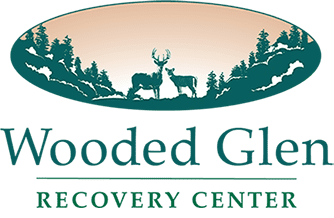Making smart nutritional choices is important for everyone. What we eat—and in what amounts—is essential to our overall health. Good choices have been shown to have major positive effects in both the short and the long terms.
For someone struggling with a substance use disorder, good nutrition offers the additional benefit of lessening the risk of relapse. Making smart choices about food can also help reverse some of the damage done by drug and alcohol use.
But in the same way everyone knows that good nutrition is important, everyone also knows that making lasting changes in our diets is difficult. Sometimes it just seems impossible.
In fact, one of the specific challenges for those in recovery is dealing with cravings for sugar and caffeine because they can provide something resembling the rush of using drugs. That, unfortunately, can be a gateway to relapse if the small rush available from sugar and caffeine leads to increased temptation to return to drug use.
Even without that increased risk of relapse, we can probably agree that sugar and caffeine are not the foundational building blocks of good nutrition. So that brings us back to where we started: we know good nutrition matters. Now we just have to commit to eating better. What does that look like in practice?
Start with Something Green
Leafy greens are a great place to start. Adding arugula, spinach, kale, and any of the lettuces you like (except for iceberg lettuce, which is more water than anything else) to your diet is an easy way to increase the nutritional value of what you eat while also reducing overall calorie intake.
Add in a Rainbow of Other Colors
The produce section of your local grocery store or your community’s farmer’s market are excellent places to find healthy food. From zucchini to apples and everything in between, fresh vegetables and fruits are ideal choices for good nutrition. You can eat them raw—which makes them easy to add to your diet—or you can prepare them in any number of delicious ways.
Lean Protein is the Way to Go
When choosing meat to enjoy, lean proteins—including chicken, turkey, and fish—are a great option for every day. Beans and nuts (as long as they aren’t high in salt or saturated fat from being cooked in oil) are also excellent sources of protein. And you don’t have to give up red meat. Just eat it in moderation.
Good Fat is a Good Friend
While we’ve all been counseled over the years to reduce our intake of fat, it turns out that there is, in fact, good fat—and it’s found in a lot of delicious food. The fat found in dark chocolate, avocadoes, fish, eggs, and more is actually essential to good health. Good fat binds with various nutrients and provides Omega fatty acids which promote the repair of damaged tissue. To focus your fat intake on the good fat, avoid processed foods and choose whole foods whenever you can.
Embrace Whole Grains and Complex Carbohydrates
When choosing carbs, you want to pick complex carbohydrates like starches and unrefined sugar. These foods, which include options like brown rice or quinoa (as opposed to white rice or skinless potatoes), provide energy to the body. Also, whole grains offer better nutrition, so you should look for whole wheat flour and whole wheat pasta whenever possible. Limiting the amount of refined sugar and flour in your diet can have significant positive impacts on your health.
Water is Your Best Beverage Choice
Good hydration is important, and water is the best drink for making sure you stay hydrated. As an added bonus, water has no sugar and no caffeine. Green, white, and herbal teas are also good options because they tend to be low in caffeine and provide other health benefits.
Eating with Intention—and an Adventuresome Spirit
If the food ideas listed above represent a major change in your eating habits, you might worry that making the switch is just too difficult. It might help to think of healthy eating as an adventure rather than a chore.
To that end, you could commit to trying foods from various parts of the world. You can invite friends to share favorite recipes with you—and to come over to help you prepare and eat them. You could try a new restaurant or purchase a new cookbook that might get you out of your comfort zone. The key is to try to have fun and to open yourself to new experiences. If preparing and eating food becomes a source of satisfaction and pleasure, you are far more likely to keep eating healthy.
To get started, consider keeping a food journal so that you have an accurate idea of what you are eating and drinking each day. Reminding yourself you’ve already had a sugary treat can help you resist the temptation to eat something unhealthy later in the day.
Remember: it’s not about guilt. It’s about making intentional choices. And it’s also about flexibility and forgiveness. Don’t beat yourself up for eating something you love—even if it isn’t healthy—from time to time. You can eat food that is healthy and delicious and treat yourself now and again, too.
Prioritize Good Choices for Good Health
Your diet is an essential part of a wellness-focused lifestyle. Put simply, when you eat well, you feel good—and that healthy feeling supports your long-term sobriety. Each healthy meal is a positive step along the road of recovery.
We Know You Are What You Eat
At Wooded Glen Recovery Center, we know good nutrition supports your rehabilitation and recovery. We will develop a personalized treatment plan that will take healthy food choices into account, and we’ll share resources and ideas that can help you make those healthy choices more often.

